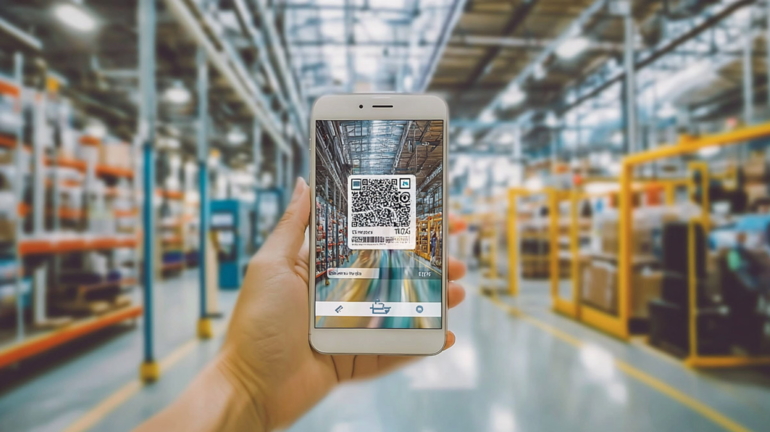
Digital Product Passport (DPP) - What companies need to know now
Imagine buying a product and having access to all the important information at the touch of a button: Where do the raw materials come from? How was it manufactured? Can it be repaired or recycled? This is exactly what the Digital Product Passport (DPP) will make possible in the future. It will bring a whole new level of transparency to the market - for consumers, companies and authorities alike.
However, while the benefits are obvious for end customers, the DPP poses a challenge for many companies. From 2027, manufacturers and retailers in the EU will have to provide extensive product-related data digitally - initially for batteries and later for other sectors such as textiles, construction products and electrical appliances. Companies that do not act in time risk not only violating the law, but also being at a competitive disadvantage if they do not meet the increasing requirements for sustainability and supply chain transparency.
The DPP is not just a bureaucratic project - it changes how we understand and manage products. It is also an opportunity to optimize processes, manage data efficiently and increase our own competitiveness at the same time.
What is the Digital Product Passport (DPP) and why is it being introduced?
The Digital Product Passport (DPP) is a key initiative of the European Union to improve the transparency and traceability of products throughout their life cycle. It is part of the EU Green Deal and aims to promote sustainable consumption and a circular economy.
With the DPP, manufacturers and retailers must provide detailed information about their products digitally - including:
- Raw materials & origin: Where do the materials come from?
- Manufacturing process: How was the product produced?
- Use & lifespan: What properties and functions does the product have?
- Repair & recycling: How can it be reused or recycled?
This comprehensive data is intended to ensure that consumers, authorities and companies can make informed decisions - be it in product selection, repair or recycling.
How can the Digital Product Passport be accessed?
The Digital Product Passport is accessed via a data carrier that is attached directly to the product. This can be a QR code or an RFID tag, for example.
How access works:
- Consumers, retailers or authorities can scan the QR code with a smartphone or reader.
- The code leads to a digital platform on which the stored product information is available.
- The GS1 Digital Link ensures that the link to the data is standardized and uniform.
This digital solution enables quick and easy access to all relevant information - regardless of whether it concerns materials, recycling or repair options.
When will the Digital Product Passport become mandatory?
The Digital Product Passport will be introduced in stages:
- 2027 - First mandatory application for batteries
- Following years - Expansion to textiles, construction products and electrical appliances
- Future expansion - Planned introduction for furniture, packaging and other consumer goods
This means: Companies must prepare early to provide the necessary product data in standardized formats and meet the new legal requirements.
Companies must overcome these challenges with the introduction of the DPP
The implementation of the Digital Product Passport presents companies from various industries with significant challenges - particularly in the areas of data management, supply chain transparency and legal compliance.
1. Complexity of data collection and management
Most companies currently store their product information in different systems, Excel spreadsheets or manual databases. But the DPP requires structured, centralized and standardized management of all relevant product data - which often means a complete change of internal processes.
Solution: A central Product Information Management (PIM) system such as Perfion can help to efficiently collect, structure and provide product data in a standardized way.
2. Transparency and data integration along the supply chain
Manufacturers, retailers and suppliers must ensure that all relevant data can be exchanged securely and seamlessly along the entire supply chain. However, many companies work with outdated IT systems or isolated data sources, which makes the exchange and consistency of information difficult.
Solution: A consistent data strategy and interfaces between ERP, PLM and PIM systems are necessary to enable smooth data exchange.
3. Compliance with legal requirements and flexibility for future adaptations
The Digital Product Passport is not a one-off regulation, but will continue to evolve. Companies must ensure that they can react flexibly to future regulatory changes - be it through new data requirements or expanded product groups.
Solution: A scalable data management system with automatic updates helps companies to remain legally compliant in the long term and adapt to new requirements.

The Digital Product Passport also offers clear advantages for companies
Despite the challenges, the Digital Product Passport offers considerable opportunities for companies:
- Better transparency in the supply chain
- Proof of sustainability for consumers and business partners
- Increased efficiency through optimized data management
- Compliance with legal requirements and avoidance of penalties
- Competitive advantage through early implementation
The Digital Product Passport is not only becoming an obligation, but also a success factor for future-proof companies.
How can companies prepare for the DPP?
Early preparation pays off: Companies should take the first steps now to prepare for the new requirements:
- Capture and centralize data- All relevant product information should be digitized and standardized. A PIM is suitable for this.
- Familiarize yourself with the legal requirements - Understand and implement the specific requirements for your own industry.
- Improve supply chain transparency - Optimize the data flow with suppliers to avoid gaps.
- Evaluate technological solutions - Implement data management systems that meet the new standards.
Conclusion: Act now to remain competitive in the long term
The digital product passport is changing the market for good. Companies that prepare for it early on will benefit in the long term from greater transparency, optimized processes and a better competitive position.
Now is the right time to optimize product data, meet legal requirements and actively shape sustainable business.
Contact us and let our experts advise you!
KI was used to support the creation of texts and images.
Sources:
<a href=”https://barcodedeutschland.de/faq/digitaler-produktpass-dpp/?utm_source=chatgpt. com" target="_blank" rel="noopener">barcodedeutschland.de
deutsche-recycling. d
gs1-germany.de
array(8) {
["@type"]=>
string(11) "NewsArticle"
["identifier"]=>
string(17) "#/schema/news/509"
["headline"]=>
string(64) "Digital Product Passport (DPP) - What companies need to know now"
["datePublished"]=>
string(25) "2025-04-07T11:30:00+02:00"
["url"]=>
string(66) "/news/digital-product-passport-dpp-what-companies-need-to-know-now"
["description"]=>
string(299) "From 2027, the DPP will be mandatory in the EU and will change the way in which product information is recorded and provided. But what does this mean in concrete terms for manufacturers, retailers and suppliers? What advantages does the DPP offer and what challenges will companies have to overcome?"
["author"]=>
array(2) {
["@type"]=>
string(6) "Person"
["name"]=>
string(13) "Steffi Greuel"
}
["image"]=>
array(6) {
["@type"]=>
string(11) "ImageObject"
["caption"]=>
string(0) ""
["contentUrl"]=>
string(58) "/assets/images/r/digitaler-produktpass-b17pcyntfh69wj9.jpg"
["identifier"]=>
string(51) "#/schema/image/4cc83ac6-138b-11f0-b45a-408d5c841e28"
["license"]=>
string(0) ""
["name"]=>
string(0) ""
}
}



